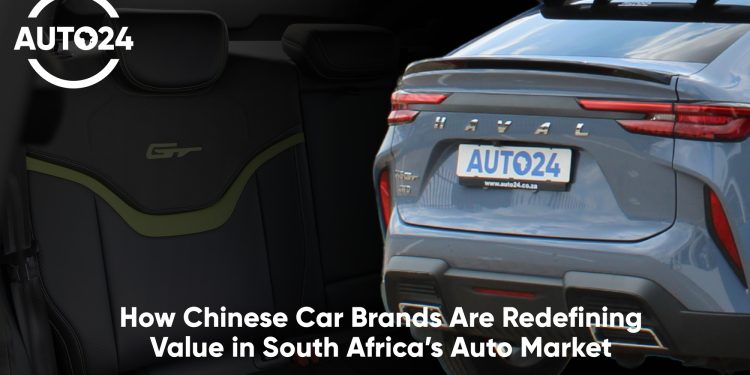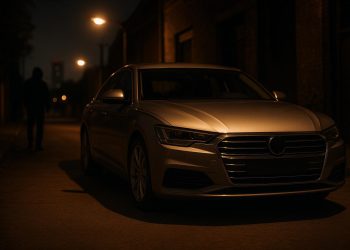The Rise of the Red Dragon on South African Roads
Not long ago, Chinese car brands were viewed with hesitation in South Africa. But in just a few short years, they’ve turned that narrative around — and in 2025, they’re thriving. Brands like Chery, Haval, GWM, BAIC, and BYD are climbing the ranks, no longer seen as budget buys, but as smart, feature-packed contenders delivering real value.
In this article, we explore how these manufacturers are changing the landscape — from pricing and styling to technology and customer trust — and what South African buyers can expect when choosing Chinese over traditional brands.
1. Sales Growth That’s Impossible to Ignore
The numbers speak volumes. Chinese brands are no longer niche — they’re mainstream, climbing monthly sales charts and growing dealership footprints across provinces.
Key Highlights:
- Haval Jolion and Chery Tiggo 4 Pro consistently make it into South Africa’s top 20 best-selling vehicles.
- BAIC is investing in local production facilities, aiming to cut costs and boost parts availability.
- GWM has grown from light commercial vehicles to offering a full SUV and bakkie lineup.
Their strategy? Offer more for less — and do it with style.
2. More Features, Less Cost
For South African drivers navigating tight economic times, value is everything. Chinese brands have mastered this — packing cars with high-end features typically found in far more expensive models.
Expect to see the following in cars under R350,000:
- 10” infotainment screens with full smartphone integration
- Digital dashboards and panoramic sunroofs
- Automatic climate control and keyless start
- Cruise control, rear parking sensors, and even 360° cameras
Leading Models:
- GWM Ora (EV)
- Chery Tiggo 7 Pro
- Haval H6
- BAIC X55 and B40 Plus
These vehicles are changing expectations for entry- and mid-range cars in SA.
3. Design and Build: Catching Eyes and Holding Up
Gone are the days of plastic-heavy cabins and outdated exteriors. Modern Chinese cars are designed by international teams — with European flair and global appeal.
The Omoda 5, for instance, wouldn’t look out of place parked next to a BMW X1. Haval’s new lineup has adopted a premium, almost Lexus-inspired aesthetic. And even entry-level models feel more solid, refined, and road-ready.
4. Tech Innovations That Lead the Segment
If there’s one area where Chinese automakers are setting the pace, it’s technology.
Most vehicles come equipped with:
- Voice-activated controls
- Driver-assistance systems like lane-keep and collision warnings
- Mobile app integrations
- Wireless chargers, premium audio, and OTA software updates
GWM Ora Cat and BYD Dolphin are especially tech-forward — leading the EV charge in a market just beginning to embrace electric mobility.
5. Long-Term Peace of Mind Through Better Support
Early criticisms about support, parts, and servicing have largely been addressed. In 2025:
- Warranties of up to 7 years or 200,000 km are becoming standard
- Dealerships are spread across major cities and growing into tier-2 regions
- Dedicated service centers and parts hubs are easing concerns
Haval, Chery, and BAIC have each invested millions into aftersales infrastructure — showing they’re here for the long haul.
6. The Growing Confidence in Resale Value
Historically, Chinese cars suffered from steep depreciation. But with more buyers driving them and fewer reliability issues, resale demand is rising.
Consider:
- The Chery Tiggo 8 Pro, after 2 years, still retains over 70% of its original value
- Haval P-Series bakkies are now sought after in the second-hand market
- More dealerships are offering trade-in guarantees and certified used options
This changing perception is helping Chinese brands compete directly with traditional favorites like Toyota and Hyundai.
7. A Head Start in EV Development
Globally, China dominates the electric vehicle scene — and South Africa is beginning to feel that influence.
What’s coming (or already here):
- BYD Dolphin & Atto 3
- GWM Ora Cat
- Electric variants of Chery Omoda and Tiggo series
Chinese EVs are not only more affordable than their European or American counterparts but also better equipped — giving eco-conscious South Africans more choices in a growing segment.
8. AUTO24: Bridging the Gap for Buyers
AUTO24 has positioned itself as the go-to platform for buying Chinese vehicles with confidence. Their certified pre-owned program covers a wide range of Chery, Haval, GWM, and BAIC vehicles.
Here’s what buyers can expect:
- Fully vetted vehicles with verified histories
- Competitive financing options tailored to income
- Roadworthy certificates, registration handling, and warranties
- Exceptional post-purchase support
Whether you’re shopping in Cape Town or Gauteng, AUTO24 gives you trusted access to South Africa’s newest rising stars.
9. Endorsements from South Africans Themselves
Scroll through TikTok or YouTube, and you’ll find hundreds of local content creators showing off their Chinese vehicles — from drag races to family road trips.
This kind of grassroots marketing is priceless. It’s transforming opinions through real experiences, and it’s giving the average South African buyer confidence through relatability.
Conclusion: The Future Is Bright — and Red
Chinese car brands are no longer chasing the market — they’re leading it in many ways. And South Africans, who once eyed these vehicles with caution, are now embracing them as smarter, better-value alternatives.
In a country where cost, features, and support matter more than ever, these automakers are offering a full package that’s hard to beat.
If you’re in the market for a new or used vehicle, don’t overlook the new wave of Chinese excellence. With brands pushing innovation, value, and long-term quality — and with partners like AUTO24 making the process seamless — 2025 might just be the year you switch lanes.





